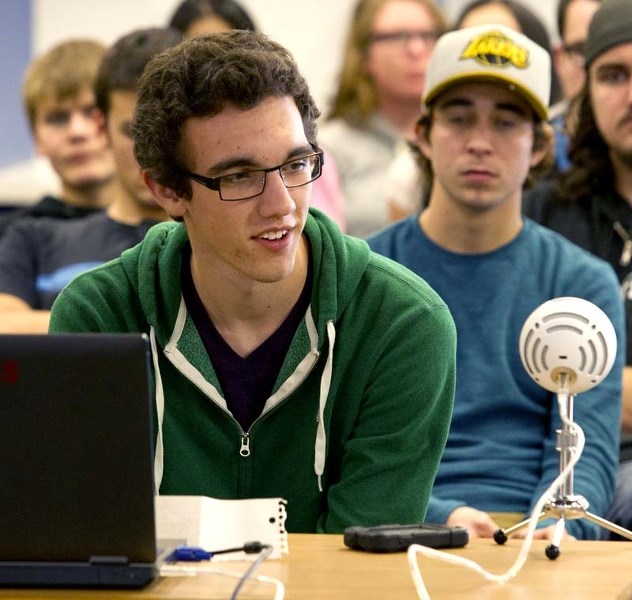Social studies students at Sturgeon Composite High School have renewed interest in currrent events topics, thanks to an unusual connection last week with a United Nations Crisis Centre member.
Grade 11 teacher Ken Stanski arranged two classrooms to meet in the library so they could Skype with his nephew Dr. Keith Stanski, who works in New York for the United Nations.
The topic for discussion was Syria, and though the video portion of the Skype connection didn’t work well, the students were able to talk to Dr. Stanski directly.
The youths had done their homework. Later many admitted that in anticipation of the event, they had boned up on Syria and its location in the Middle East. Some even paid more attention to recent news events so they could understand Stanski’s discussion with them.
“His job must be overwhelming,” said student Corbin McCormick. “This made it real, not just us having to study about current events.”
Stanski, who explained that he has dual citizenship, grew up in California and has worked in the UN Middle East Crisis Centre for about six months.
He took photos to show the students in Sturgeon Composite what working at the UN is like.
“These are photos of the UN building in New York and of my office. There are photos of the crisis centre, which is at the core of our function and is in operation 24 hours per day,” he said.
Stanski described his own worries shortly after being employed, when the crisis in Syria heightened.
“There was a period when we were having daily calls and at the same time, my sister, who works for a non-government organization, was in Lebanon. It was pretty frightening for me personally,” Stanski said.
He gave the students a brief overview of how UN staff worked to provide immediate relief for Syrian refugees affected by the civil war.
“There are quite a few projects trying to register the Syrians in different countries. There have been about 2.5 million Syrians who had to flee,” he said.
Stanski also discussed the issue of chemical weapons and how the UN is working with governments on all sides to get an agreement about their use in warfare.
The topic of chemical weapons was significant and important to these students in Grade 11 and 12, who are currently studying about chemical warfare and gas attacks used during the First World War.
“We’re also learning about nationalism. This gives us a sense of Syria and how important nationalism is to the people of that country. It’s different than our nationalism,” said Ian Griffiths.
The students paid close attention to Stanski’s photos of the UN building itself and to his explanation of the crisis centre and the response that happens when trouble is reported in far off places such as Syria.
“He’s in a job where he is really making a difference in the world. I think I’d like to work at the UN,” said Paul Paradis.




